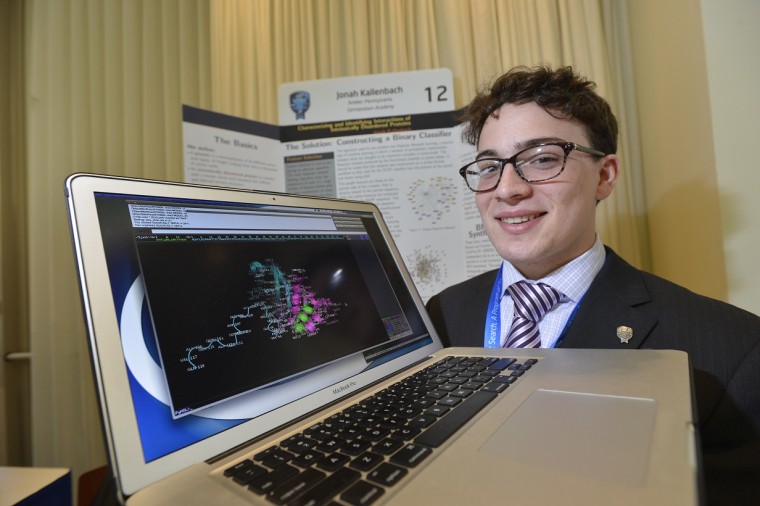A new class of drugs may soon be developed to treat everything from breast and ovarian cancer to tuberculosis, thanks to a 17-year-old’s system for declassifying the interactions between two types of proteins.
Jonah Kallenbach, a high school senior at Germantown Academy in Fort Washington, Pa., won second place and a $75,000 scholarship Tuesday at the Intel Science Talent Search, an elite science fair, for his development of the computer program.
The current problem with drug development is that it's hard to target specific parts of the body, or particular disease-causing organisms within the body. What's needed is a translator, something that understands the language of proteins. That's, in part, what Kallenbach has designed.
Proteins, Kallenbach explained, are the workhorses of molecular systems in the cell. They come in two broad categories: ordered and disordered. Ordered proteins are the standard type that form a structure and carry out a cell function.
“The second class of proteins are these wacky proteins … that have flexibility, they can fold many different ways, potentially they can form in many different ways, and potentially they can have many binding partners,” Kallenbach told NBC News.
These disordered proteins show up in the signaling networks of human bodies and disease organisms, he noted. How they interact with the standard class of proteins is what particularly interest scientists who are trying to find cures.
Kallenbach’s grandfather, a biochemistry professor, showered him with chemistry kits and microscopes as a young child. In ninth grade, while working in a biophysics lab, he was exposed to bioinformatics, the application of computer science to other fields such as biology.
"I realized the power computer science can have," he said.
He was hooked and took to the field eagerly, ultimately building a tool that accurately predicts the interactions between ordered and disordered proteins. He validated his results with proteins coded by the cancer-associated BRCA1 gene.
“There are potential applications in drug design, in targeting disordered regions with drugs, which we have never been able to do,” he said. “It is really important because a lot of the most important disease proteins … have significant disordered regions.”
The young scientist is already in contact with a pharmaceutical company that is interested in working with him to develop viable medical treatments.
Meanwhile, Kallenbach plans to attend college in the fall. Where he’s going, he’s not quite sure, but the $75,000 scholarship, he said, “is going to be a huge ease of burden on my parents. And it is just an enormous honor.”
John Roach is a contributing writer for NBC News. To learn more about him, check out his website.
